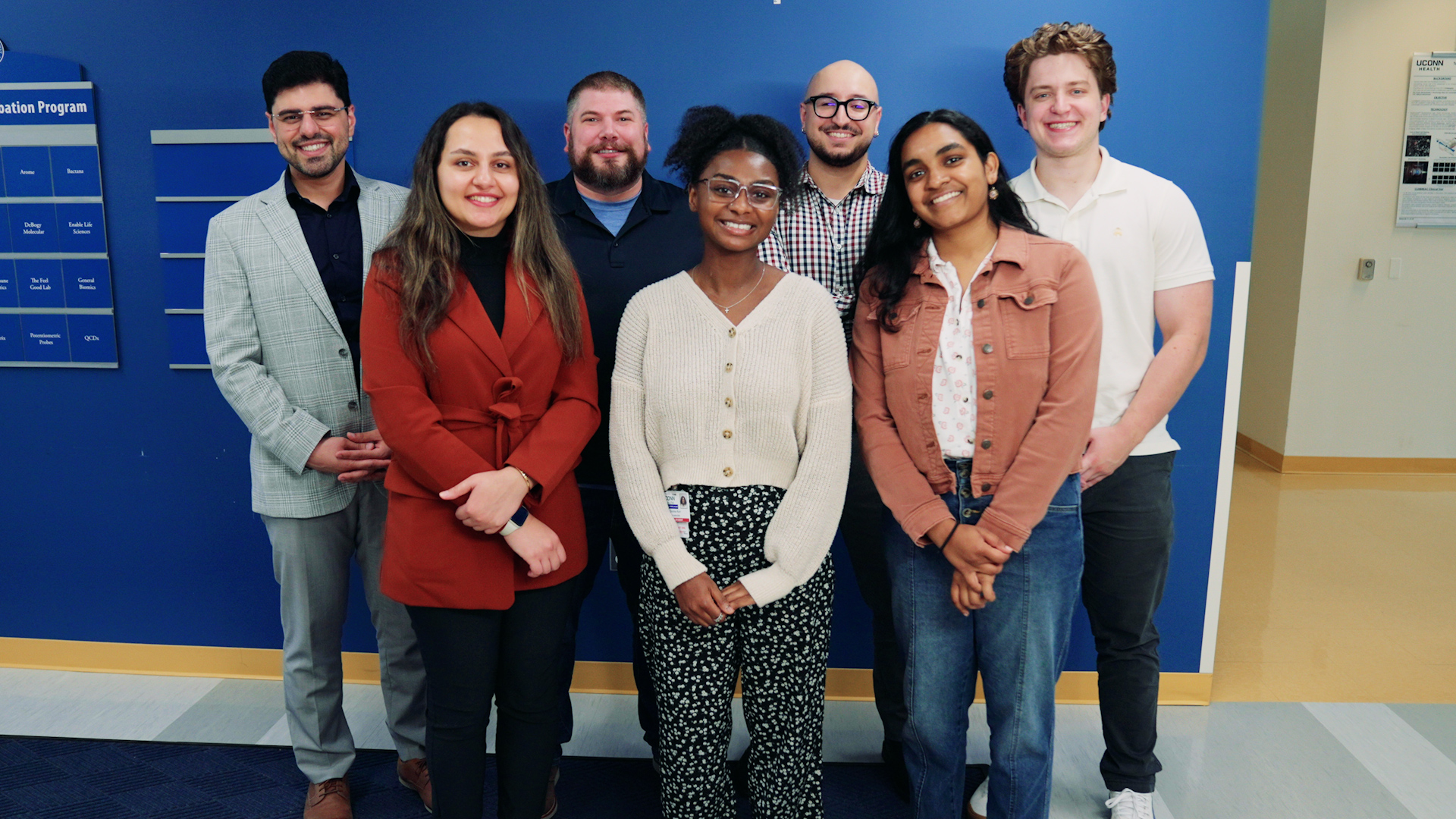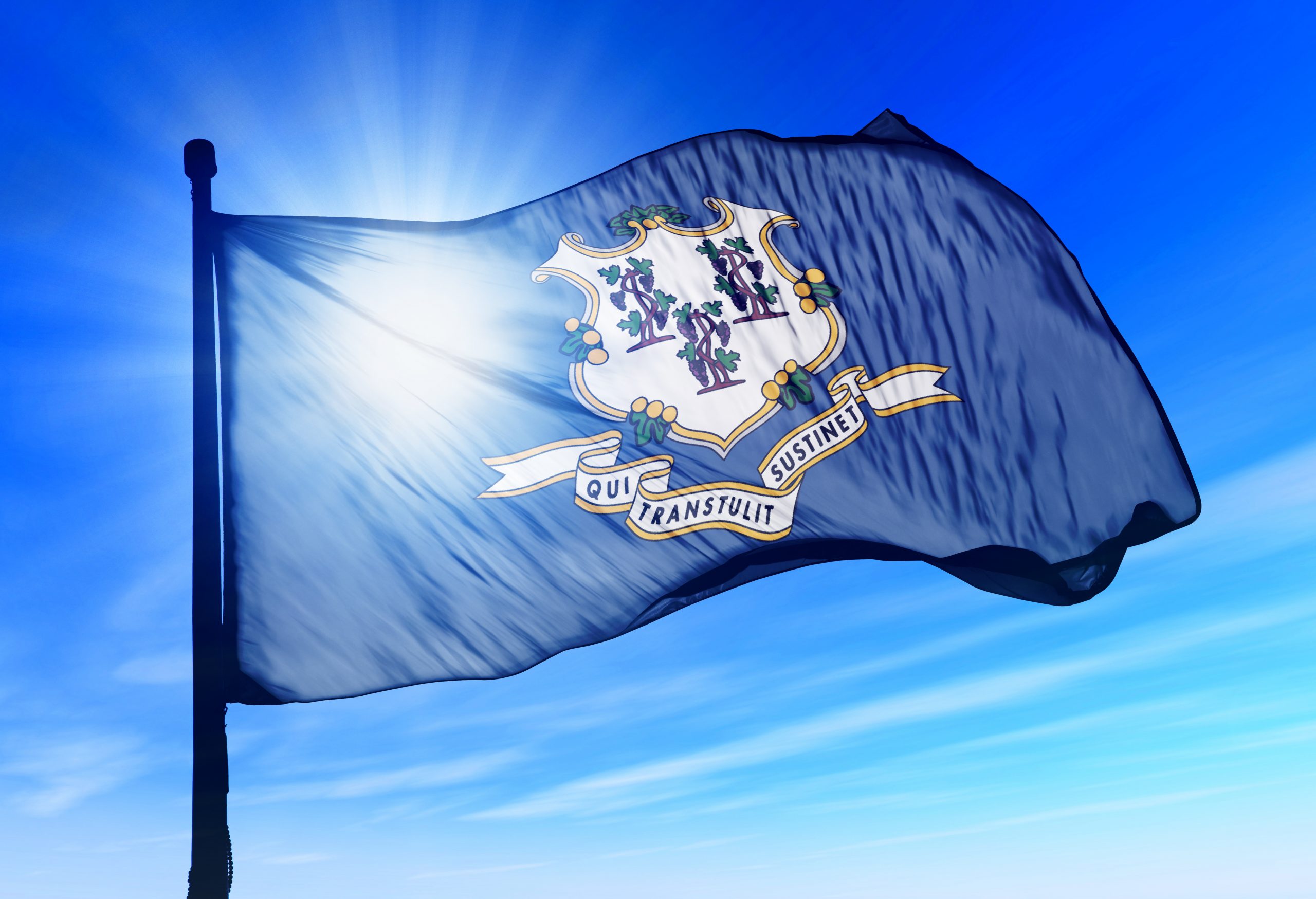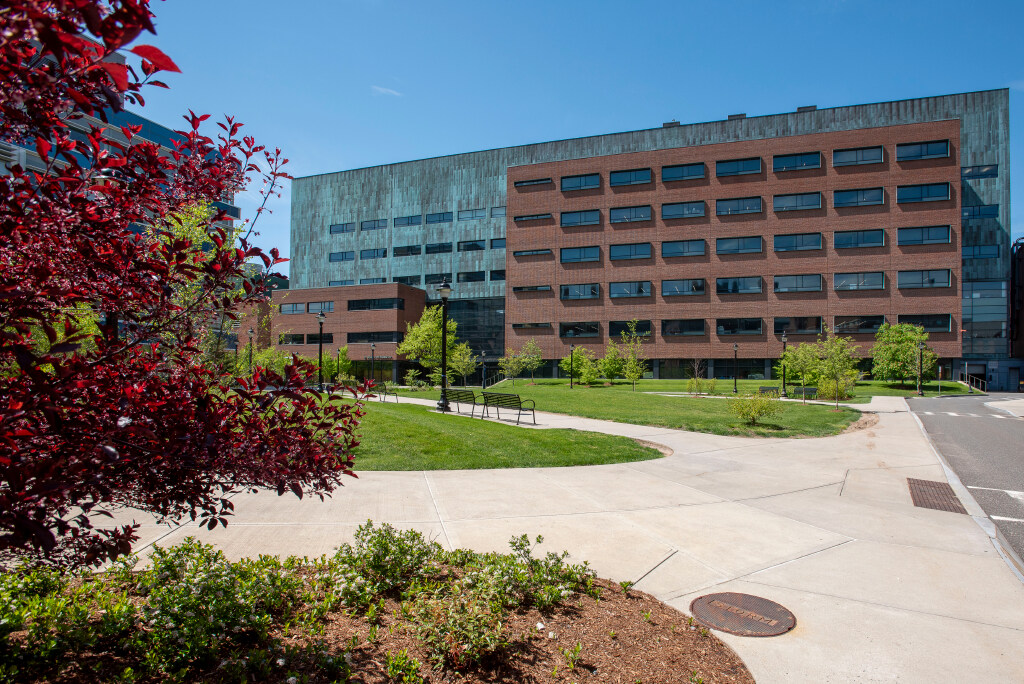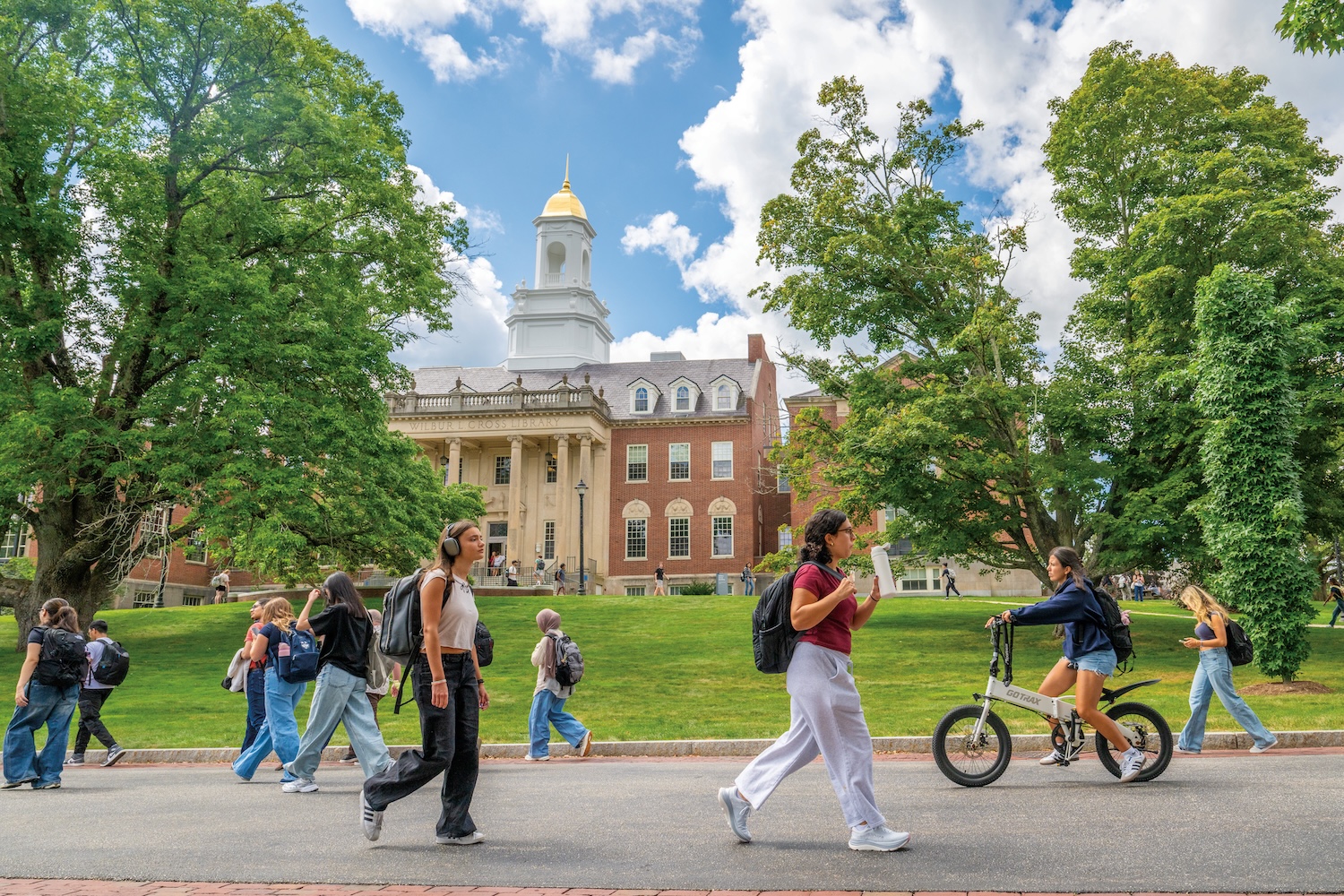A Guide to Apple Picking in Connecticut
As the fall temperatures roll in and the leaves begin to change, many people in Connecticut are thinking about a favorite fall activity – apple picking. Evan Lentz, assistant extension educator in the Department of Plant and Landscape Architecture, is an expert in commercial fruit production. Lentz answers some questions about apple farming in Connecticut and the best way to enjoy “pick your own” experiences in the state.
What kind of apples are available in Connecticut?
We can grow hundreds of varieties of apples. There are a number of very popular apples – Golden Delicious, Empire, Cortland, Honey Crisp, Fuji – all of those are kind of standards. We do have a lot of new varieties that are constantly being churned out by plant breeders as well that are designed to respond to needs in fruit farming in a rapidly changing environment. We get a lot of improvements, for example, resistance to pests or drought tolerance. Additionally, there are a lot of farms and farmers who are interested in preserving heirloom varieties of apples – very old varieties of apples that we don’t see too much anymore – and a lot of people like those unique apple crops.
When are apples available in Connecticut?
Our earliest varieties like Ginger Gold or Paula Red, are actually already done picking. Those are usually available in August. We have varieties that are available around September like McCowan, Macintosh, Gala, Cortland, Ida Red, and Honey Crisp. Some of the later varieties are ready towards October, like Fuji, Jonah Gold, Golden Delicious, and Red Delicious. One of the things farmers like to do is ensure a nice long picking season, especially for “pick your own” operations. They want to make sure their customers have a fair amount of time to make it out to the orchard. So, farmers plan ahead. They’ll plant early, mid, and late varieties.
Where are apples grown in Connecticut?
We can grow apples everywhere in Connecticut. Connecticut is well-suited to producing apples across the board, and apples are one of our largest agricultural commodities in the state. We have 296 apple producers across a total of 1,917 acres of apples with an estimated $12 million of revenue every year.
How is the apple crop this year compared to last year?
Last year we had a late season frost which really impacted all our fruit crops in the state. So, compared to last year, the apple crops this year look fantastic. We did have a few weather and climate-related challenges this year that were more isolated. We’ve had some frequent heavy rains which pose a challenge to pest control in a couple of different ways. Most fungi thrive under wet conditions. Farmers have to spray fungicides to protect crops, and it really only takes half an inch of rain to diminish the efficacy of the materials that are applied. So, you either have to reapply, which costs time and money, or you have to ride it out and see. We also had a few isolated hailstorms and that affected a large number of fruit and vegetable crops. When those little hails fall down, they’ll hit the apple and bruise it maybe cause a bit of rot if the skin is broken. But overall, it’s looking good this year. A lot of farmers are excited about their yield, especially coming in on the heels of last year’s kind of disastrous season.
How can people identify good apples to pick?
A lot of people shop with their eyes. You may not be getting the same [aesthetic] quality when you do “pick your own” as you would with apples that have been wholesaled to grocery stores because there are different requirements. But, for the most part, farmers are only going to be opening the areas for picking that they’re proud of. No farmer is going to want to sell a sub-par product. If you’re out there picking, chances are most of the apples are going to be perfectly fine for you. Even if you see some sort of blemish on it, as long as the skin is not broken and the flesh is not soft, there’s no rot, the apple is going to be perfectly fine. If you’re someone who’s a baker or you like making apple sauce or jam, you can certainly go for those apples that are a little uglier.
What is the correct way to pick an apple?
Remember that these plants are the farmers’ livelihoods, so it’s important to be thoughtful. You want to pick from underneath, give it a nice little twist and pull. It should come right off if it is ready to harvest. Certainly don’t rip or pull down on the apple, it can cause damage to the tree which can have negative impacts for farmers later on. A lot of farmers invite you to drive through their orchards, so don’t pick apples off trees while you’re driving by and stay on the farm roads. Only pick where they’re telling you to pick – maybe the variety isn’t ready yet, or maybe the apples there didn’t turn out so well. Pay attention to the signs and follow instructions from the workers.
What should people participating in “pick your own” programs keep in mind while visiting the farms?
It’s important for people to realize when farmers invite you onto their property, that this is their livelihood and they’re also businesses. Most farmers won’t mind if you have an apple or two while you’re picking – that’s part of the experience. But it’s important to not take advantage of the system. A lot of these farms do a really good job about labelling which varieties are which, they take a lot of the guess work out of it for you. And if you have questions about apples that are good for eating or baking or apple sauce, they’re going to have that information for you, so take advantage of it as much as you can. Get out there and support your local farms and realize where your food comes from. It’s really nice to get people out to the farms, because they get that exposure that isn’t possible in a supermarket.
This work relates to CAHNR’s Strategic Vision area focused on Ensuring a Vibrant and Sustainable Agricultural Industry and Food Supply.
Follow UConn CAHNR on social media
Latest UConn Today
- UConn Cancer Care Startup Goes Global (and Beyond)Encapsulate, a MedTech company founded by UConn alumni, closes seed round and aims ever higher
- What Happens When Local Hospitals Stop Delivering Babies? UConn Anthropology Student is Hoping to Find Out'The goal of this project is, within the medical anthropology context, to really look at people’s lived experiences'
- UConn Magazine: UnrivaledForgive Napheesa Collier and Breanna Stewart for not gushing over the success of Unrivaled, the three on three women’s basketball league they cofounded
- New Interactive Map of Connecticut Nonprofits Rolled Out to Help With Decision-Making'Nonprofits have saved the State of Connecticut billions, not millions, of dollars. They took on some of the toughest public services'
- UConn Pharmacy Professor Running for President-Elect of the American Society of Consultant PharmacistsChristina Polomoff, Pharm.D. (‘14), associate clinical professor, is running for president-elect of the American Society of Consultant Pharmacists (ASCP). Supported by her UConn and pharmacy communities, she hopes to continue building ASCP as an innovative, inclusive home where every member thrives.
- UConn, Bridgeport Officials Announce ‘Promise’ Financial Aid ProgramTalented students from the Park City will receive financial aid for attending any UConn campus













